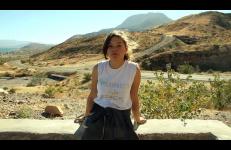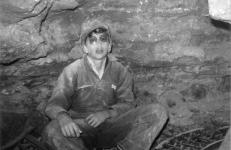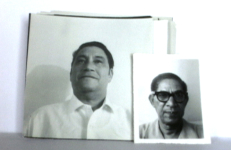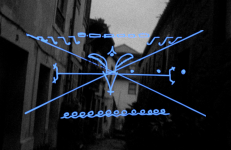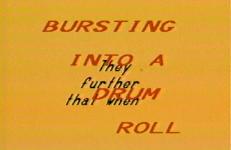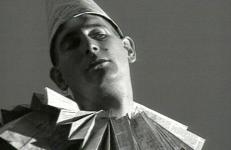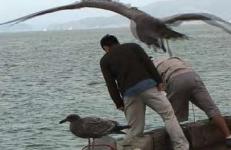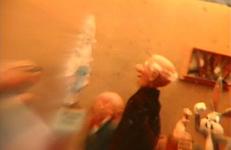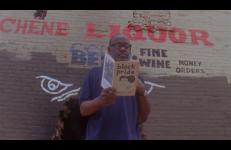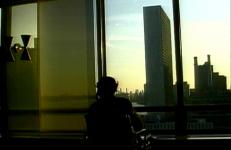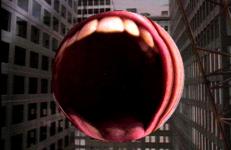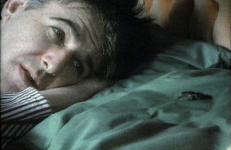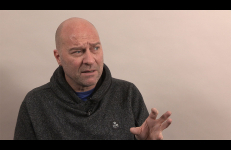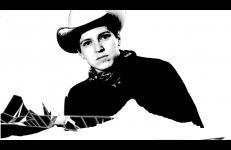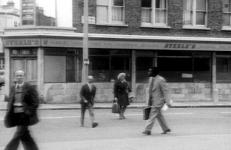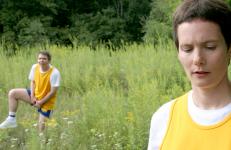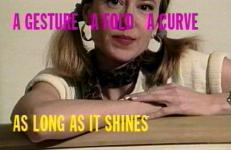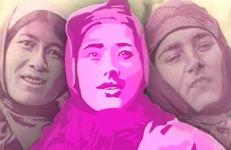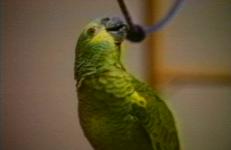“Fouteen-year-old bone collector Maxine Rose is looking for validation from her heroes, amongst them the primatologist Jane Goodall, Archbishop Desmond Tutu and the New Zealand teen pop star Lorde. Offering them a gift of language, Maxine Rose stands for the desire to be visible and understood, not unlike the desire of an artist. We are particularly impressed by the multilayered story telling structure, the freshness of the characterization, and the honest exploration of an artists` vulnerability."
Language
The Disappointment: Or, The Force of Credulity is a documentary about the search for four lost treasures buried on a single farm in Missouri. These treasures include a Spanish explorer's gold, silver from the Civil War, mysterious stone carvings, lost texts, and a wife's attempt to heal her husband and protect herself and her children. Part personal documentary and part historical essay, The Disappointment traces the patterns of cultural forgetting etched in the landscape of the Austin Farm.
Small biographies and musing generalizations--men’s relations to each other and their lives. There is hope and loneliness, companionship and isolation and the simplest of filmic elements to contrast the complexity of human emotions. The delicacy of the formalist writing moves the listener from intimacy to universalism and back again, swaying gently to and fro like the rocking of a ship. The minimalism of the photographic presentation allows the viewer to recognize the humanity in each individual document of a body.
The Early Sun, Red As A Hunter's Moon follows this temporal tradition in an interpolation of Kiowa lore in excerpts from N. Scott Momaday's The Way to Rainy Mountain, a reunion in Portugal between the filmmaker and their friend after 20 years, and a historical attempt to decode a cryptic letter from 1890 with “hieroglyphic script” that arrived at Pennsylvania’s Carlisle Indian Industrial School sent from a reservation in the Oklahoma Territory to a Kiowa student named Belo Cozad.
Earthglow is a poem written for the character generator and switcher that conveys a writer's internal dialogue through both subtle and dramatic color changes and through movement, size, and placement of words. The ambient soundtrack evokes the confluence of past and present perceptions.
"The video Emission found its origin in three performances which I wrote between 1988 and 1991. In their original form, the performances dealt with sex, romance, and communication technologies. The video elaborates upon these themes to speak of how human beings exist in a margin between nature and technology, and works towards confounding any simplified analysis of this worn-out duality.
Encoded Facial Gesture #1 is a frame-by-frame animation of two mouth gestures that have been encoded into ASCII (American Standard Code for Information Interchanges) to spell out a brief text by Sigmund Freud on paranoia.
This title is also available on Les LeVeque Videoworks: Volume 1.
Endless Dreams and Water Between is a feature film with four fictitious characters sustaining an epistolary exchange in which their “planetary thought” is woven with the physical locations they inhabit, visual and aural characters in themselves: the island of Manhattan, the island of Majorca, in Spain, and the islands and peninsula that form the San Francisco Bay Area. The characters’ reflections and dreams enact what could be described as “an archipelagic mind,” linking worlds, time, and space.
An audience-interactive game of Mad Libs, with support from a linguistically challenged newcomer. We replace various parts of speech in newspaper articles to create new, customized meanings.
There are times when concurrent multiple realities demand an attempt to determine who has this "place in the sun" and where, exactly, it is located. Hearts and Helicopters occurs at that moment in the lives of four people.
This title is also available on Lawrence Weiner: Hearts and Helicopters - A Trilogy.
I just got this tattoo — you can see it's still healing, the edges are raised like some sort of fancy business card — to mark the completion of this, Series One of my on-going project, Final Thoughts. So, on one wrist, facing fistward, a skull and, on the other, still tender and healing, a ghost. Let them be the mascots for the series, little cartoony avatars.
Fluid Frontiers is the fifth and final film in the series entitled The Diaspora Suite, exploring Asili’s personal relationship to the African Diaspora. Shot along the Detroit River, Fluid Frontiers explores the relationship between concepts of resistance and liberation, exemplified by the Underground Railroad, Broadside Press, and artworks of local Detroit Artists.
This installation is based on the re-enactment of Franz Kafka’s allegory "Before the Law", interpreted live over a telephone line by Katharine Gun. Gun was a translator (specializing in Chinese to English translations), working with the British secret service, who chose to leak information compromising the U.S. and U.K. governments in their push for a U.N. resolution for the invasion of Iraq.
"In the free space of the commodity, I digitally took apart moving image sequences and re-animated them into an encoded montage to create a metaphor of experience where the viewer feels like a fiber optic cable has been hard-wired into their consciousness — a look where the image is simultaneously visible and invisible. My hope was to create a work that re-presented information as a kind of subliminal narrative that critiqued the currently popular technotopian rhetoric."
— Les LeVeque
“To master the one-minute time span requires considerable discipline, and few pieces, if any, had been shaped as genuine miniatures—most having the appearance of being extracts from larger works. The notable exception was John Smith’s Gargantuan, which was not only the right length for the idea, but actually incorporated a triple pun on the word ‘minute.’”
— Nicky Hamlyn, “One Minute TV 1992”, Vertigo (Spring 1993)
"A wonderfully witty example of how to conduct pillow talk with a small amphibian."
— Elaine Paterson, Time Out London
In this 2014 interview, South African artist Kendell Geers (b. 1968) discusses the function of magic, myth, and memory in his work. Beginning at childhood, Geers charts the path he has taken in his understanding of his own biography as a site of resistance. This interest in the use of personal biography culminated in 1993 with his decision to change his date of birth to May 1968 as a way to reference both the May 1968 student protests, and the fact that 1993 was the first year that South Africa had participated in the Venice Biennale since 1968.
"i am very grateful that my 鬼鎮 (Ghosttown) series has shown internationally over the last couple years and is recognized by viewers, reviewers, critics, and curators as doing decolonizing work as a feminist project that queers and glitches the Western genre. 鬼鎮 (Ghosttown) questions the quintessentially American Western in the forms of experimental films and games that are made from glitches and noise, pushing boundaries of legibility and tipping over threshold states of stability.
“In The Girl Chewing Gum a commanding voiceover appears to direct the action in a busy London street. As the instructions become more absurd and fantasized, we realize that the supposed director (not the shot) is fictional; he only describes—not prescribes—the events that take place before him. Smith embraced the ‘spectre of narrative’ (suppressed by structural film) to play word against picture and chance against order.
Identically dressed, and with sibling-like resemblance, performance artists Trevor Martin and Kym Olsen shift between spoken word and athletic dance choreography in a collection of 29 scenes. Set in various locations--including a gymnasium, an abandoned hospital, and a trailer park circus--Martin and Olsen slip between a ventriloquist and his dummy, a seducer and his surrogate, a doctor and his patient, and synchronized dance partners. The film examines a complex social psychology--questioning the colonization of the human body for various political, medical and religious agendas.
Identically dressed, and with sibling-like resemblance, performance artists Trevor Martin and Kym Olsen shift between spoken word and athletic dance choreography in a collection of 29 scenes. Set in various locations--including a gymnasium, an abandoned hospital, and a trailer park circus--Martin and Olsen slip between a ventriloquist and his dummy, a seducer and his surrogate, a doctor and his patient, and synchronized dance partners. The film examines a complex social psychology--questioning the colonization of the human body for various political, medical and religious agendas.
Identically dressed, and with sibling-like resemblance, performance artists Trevor Martin and Kym Olsen shift between spoken word and athletic dance choreography in a collection of 29 scenes. Set in various locations--including a gymnasium, an abandoned hospital, and a trailer park circus--Martin and Olsen slip between a ventriloquist and his dummy, a seducer and his surrogate, a doctor and his patient, and synchronized dance partners. The film examines a complex social psychology--questioning the colonization of the human body for various political, medical and religious agendas.
There are times when concurrent multiple realities of place demand at least an attempt to determine who in fact has, and where is, this place in the sun. Hearts and Helicopters occurs at that moment in the lives of four people.
This title is also available on Lawrence Weiner: Hearts and Helicopters - A Trilogy.
Adapted from psychologist A.R. Luria’s research in the Islamic outskirts of the Soviet Union in the 1930s, How to Fix the World brings to life Luria's conversations with Central Asian farmers learning how to read and write under the unfamiliar principles of Socialism.
Colorful digital animations based on Max Penson's photographs of collective farmers play against a backdrop of landscape images shot in Uzbekistan in 2004.
I borrowed this absurd phrase from a sign posted on the conductor’s booth in the Washington, D.C. subway. The language of civil service here borders on unintentional parody, with its blankly polite tone and bureaucratic single-mindedness. I.G.G.B.S.R.A.U.C. revisits my 1992 tape Nation, and features a dense chorus of faces and voices. These strangers ask us to consider the question, 'Who is the public?'
— Tom Kalin
When everyone has forgotten the romantic refrains of the Internationale sung in different languages, Pablito, a blue front Amazon parrot, capable of living to 100 years old, will remember. He rings bells and is learning to whistle, hum and sing the Internationale in French, Spanish and German.




